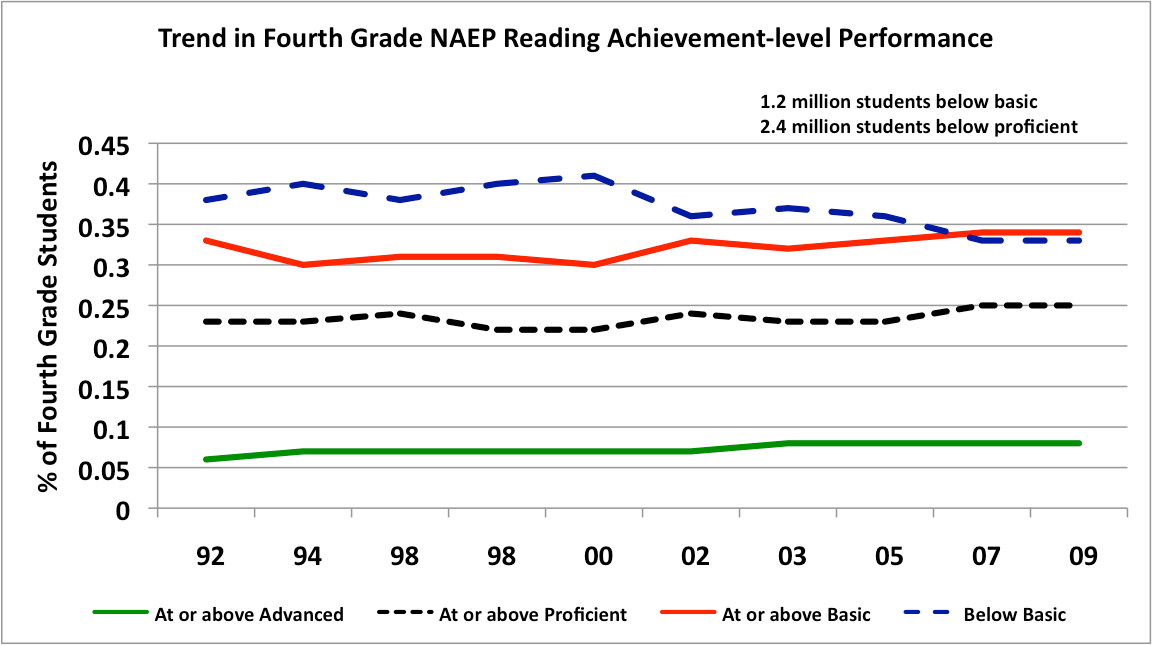What percent of 4th grade students are reading below proficiency level?
Why is this question important? One of the most critical standards for teaching reading is whether a student is above, at, or below proficiency. The degree to which students are below proficiency is an indictment of the education system.
See further discussion below.

Source: U.S. Department of Education, Institute of Education Sciences, National Center for Educational Statistics, NAEP Data Explorer
Results: The data shows 67% of fourth grade students are below proficiency in reading.
Implications: This data is a significant indictment of the education system. Significant changes need to be made when two thirds of the students can not read at the proficiency lvel by fourth grade.
Authors: None
Publisher: U.S. Department of Education, Institute of Education Sciences, The Nation's Report Card: Reading 2009
Study Description: The NAEP test is the only nationally representative and continuing assessment of what America’s students know and can do in: math, reading, science, writing, the arts, civics, economics, geography, and U.S. History. It provides a common metric for all statesand a clear picture of student academic progress over time The test stays the same each year with carefully documented changes. It is administered by National Center for Education Statistics (NCES) within the Institute of Education Sciences within the U.S. Department of Education. The tests are continually scrutinized for reliability and validity by panels of technical experts within NCES and by external groups.
Definitions:
Basic denotes partial mastery of prerequisite knowledge and skills that are fundamental for proficient work at each grade.
Proficient represents solid academic performance. Students reaching this level have demonstrated competency over challenging subject matter.
Advanced represents superior performance.
Grade 4
Basic = 208
Proficient = 238
Advanced = 268
Grade 8
Basic = 243
Proficient = 281
Advanced = 323
Grade 12
Basic = 265
Proficient = 302
Advanced = 346
Related Research:
Citation:
